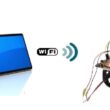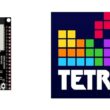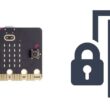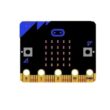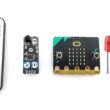The MQ-4 GAS SENSOR
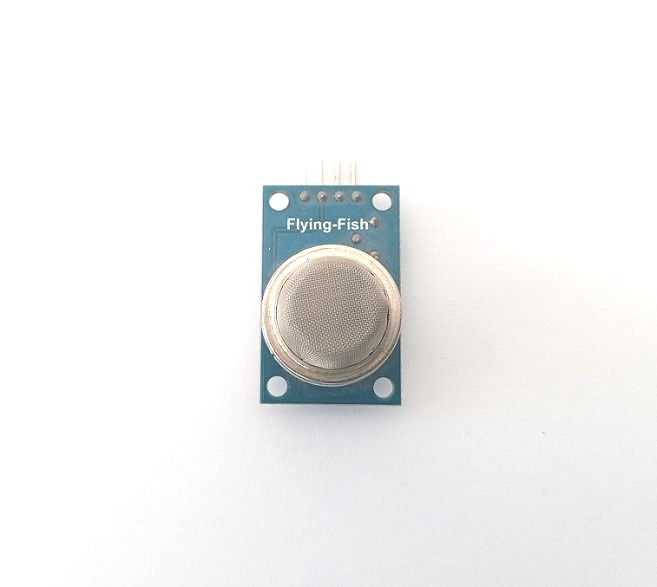
Introduction
Gas leaks can be extremely dangerous and can cause fires, explosions, and health problems. Gas leaks can occur in both residential and commercial buildings, and can be caused by a variety of factors, such as faulty appliances, damaged gas lines, and poor ventilation.
If you suspect a gas leak in your home or building, it is important to act quickly and take the following steps:
1- Leave the area immediately: If you smell gas or suspect a leak, evacuate the area immediately. Do not use any electrical appliances, turn on any lights or open any windows as this can create a spark and ignite the gas.
2- Call for help: Once you are in a safe location, call the gas company or emergency services. They will be able to send a trained professional to assess the situation and fix the leak.
3- Do not return until it is safe: Do not return to the area until the gas company or emergency services have deemed it safe to do so. They will inform you when it is safe to re-enter the building.
Gas sensors are devices that are designed to detect the presence of gases in the air. They are commonly used in industrial, commercial, and residential settings to detect the presence of potentially harmful gases, such as carbon monoxide, methane, propane, and hydrogen sulfide.
The role of gas sensors is to detect the presence of gas and send a signal to an alarm system, warning individuals of the potential danger. Gas sensors can be programmed to trigger an alarm when the concentration of a particular gas reaches a certain threshold.
In addition to detecting gas leaks, gas sensors are also used to monitor air quality in a variety of settings. For example, they are commonly used in industrial settings to monitor the air for toxic gases that may be present as a result of manufacturing processes. They are also used in residential settings to monitor indoor air quality and detect the presence of pollutants such as cigarette smoke, cooking fumes, and mold.
What is an MQ-4 gas sensor ?
The MQ-4 gas sensor is a type of gas sensor that is commonly used to detect the presence of methane (CH4) and other flammable gases, such as propane and butane. The MQ-4 sensor is based on a small semiconductor chip that is sensitive to the presence of methane and other gases.
When the MQ-4 gas sensor is exposed to the gas it is designed to detect, the resistance of the semiconductor chip changes. The change in resistance is proportional to the concentration of gas in the air. This change in resistance is then measured by a microcontroller or other electronic device, which can then be used to trigger an alarm or take other actions.
The MQ-4 gas sensor is commonly used in gas leak detectors for residential and commercial settings, as well as in industrial settings to detect the presence of flammable gases in manufacturing processes. The MQ-4 sensor is relatively low cost, easy to use, and has a fast response time, making it a popular choice for gas detection applications.
How to use an MQ-4 gas sensor ?
To use an MQ-4 gas sensor, you will need to connect it to a microcontroller or other electronic device that can read the sensor's output and trigger an alarm or take other actions when a gas is detected. Here are the basic steps for using an MQ-4 gas sensor:
1- Connect the sensor: Connect the MQ-4 gas sensor to a microcontroller or other electronic device using the appropriate wiring diagram. The MQ-4 sensor typically has four pins: VCC, GND, DOUT, and AOUT. Connect VCC to a 5V power source, GND to ground, DOUT to a digital input pin on the microcontroller, and AOUT to an analog input pin on the microcontroller.
2- Calibrate the sensor: Before using the MQ-4 sensor, it is important to calibrate it to ensure accurate readings. To calibrate the sensor, expose it to a known concentration of the gas you want to detect, and adjust the sensitivity of the sensor until it provides an accurate reading.
3- Monitor the sensor output: Once the sensor is calibrated, you can begin monitoring the sensor output. The sensor will provide an analog voltage output that corresponds to the concentration of the gas in the air. The microcontroller can read this output and trigger an alarm or take other actions if the concentration of the gas exceeds a certain threshold.
4- Maintain the sensor: It is important to regularly maintain the MQ-4 gas sensor to ensure accurate and reliable operation. This may include cleaning the sensor, replacing the sensor if it becomes damaged or worn, and recalibrating the sensor periodically.
How to program the MQ-4 gas sensor ?
To program an MQ-4 gas sensor, you will need to connect it to a microcontroller or other electronic device and write software to read the sensor's output and trigger an alarm or take other actions when a gas is detected. Here are the basic steps for programming an MQ-4 gas sensor:
1- Connect the sensor: Connect the MQ-4 gas sensor to a microcontroller or other electronic device using the appropriate wiring diagram. The MQ-4 sensor typically has four pins: VCC, GND, DOUT, and AOUT. Connect VCC to a 5V power source, GND to ground, DOUT to a digital input pin on the microcontroller, and AOUT to an analog input pin on the microcontroller.
2- Write the software: Write software for the microcontroller that will read the sensor output and trigger an alarm or take other actions if the concentration of the gas exceeds a certain threshold. The software may include calibration routines to ensure accurate readings, as well as algorithms for processing the sensor output and triggering the appropriate actions.
3- Test the system: Once the software is written, test the system to ensure that it is functioning properly. This may include exposing the sensor to a known concentration of the gas you want to detect, and verifying that the software triggers the appropriate alarm or action when the gas is detected.
4- Maintain the system: It is important to regularly maintain the MQ-4 gas sensor system to ensure accurate and reliable operation. This may include cleaning the sensor, replacing the sensor if it becomes damaged or worn, and recalibrating the sensor periodically.
Role of the MQ-4 gas sensor in the simulation of alarm systems
The MQ-4 gas sensor can play an important role in simulating alarm systems for gas leaks in a variety of settings, such as residential, commercial, or industrial environments. Here are some ways in which the MQ-4 gas sensor can be used in the simulation of alarm systems:
Testing the alarm system: The MQ-4 gas sensor can be used to test the effectiveness of an alarm system for gas leaks. By exposing the sensor to a known concentration of the gas, the system can be tested to ensure that it triggers the appropriate alarm or action in response to the gas leak.
Training for emergency responders: The MQ-4 gas sensor can be used in training exercises for emergency responders, such as firefighters or hazmat teams. By simulating a gas leak using the MQ-4 sensor, responders can practice their response procedures and test the effectiveness of their equipment.
Evaluating safety procedures: The MQ-4 gas sensor can be used to evaluate the safety procedures in place for gas leaks in a given setting. By simulating a gas leak and monitoring the response of the alarm system and emergency responders, weaknesses in the safety procedures can be identified and addressed.
Compliance testing: In industrial settings where gas leaks can pose a serious safety risk, regulations may require regular testing of the alarm system. The MQ-4 gas sensor can be used to simulate gas leaks and test the effectiveness of the alarm system to ensure compliance with safety regulations.















